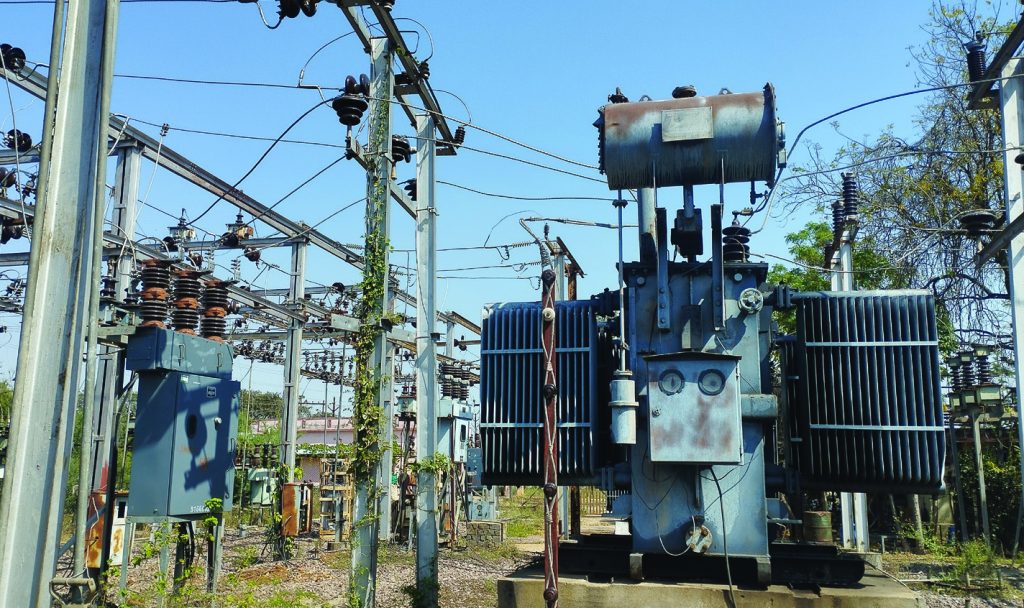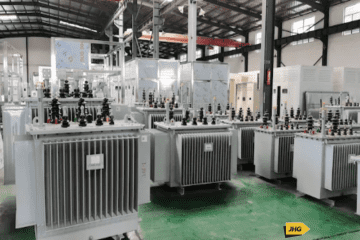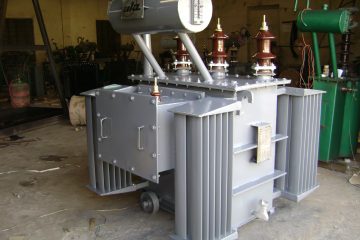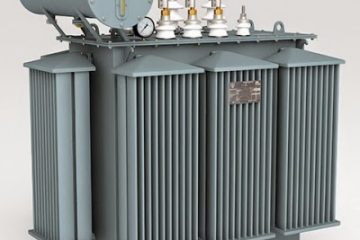When it comes to the efficient and safe operation of electrical power systems, transformer insulation plays an indispensable role. The proper insulation of a transformer doesn’t just ensure optimal performance—it protects equipment, prevents energy losses, and ultimately saves lives and infrastructure.
At Just HardRich Global Resources Limited, we bring industry-leading expertise in Electrical Power and Control Engineering to every project we undertake. Our commitment to electrical safety and innovation makes us the preferred engineering partner for businesses across Nigeria.
This guide explores, in-depth, how to properly insulate a transformer, the techniques involved, materials required, and why insulation remains central to transformer longevity and reliability.
Understanding Transformer Insulation Requirements
Before any insulation material is selected or applied, it is vital to understand the specific insulation requirements based on the transformer’s design, voltage rating, and environment of use.
1. Voltage Isolation
One of the primary goals of insulation is to prevent unintended electrical flow between conductive parts. Whether it’s between the primary and secondary windings or from the windings to the transformer core, electrical isolation is crucial. Inadequate insulation can lead to arcing, short circuits, or catastrophic failures.
In high-voltage transformers, especially those used in utility substations or industrial plants, even minor insulation lapses can trigger cascading power failures. At Just HardRich Global Resources Limited, our engineers consider voltage gradients during design and apply graded insulation systems that match the dielectric stress distribution across the transformer.
2. Temperature Resistance
Transformers generate significant heat during operation. Insulation must be able to withstand continuous thermal stress without losing its dielectric properties. Over time, materials that are not temperature-rated will degrade, reducing their effectiveness.
Modern transformer insulation systems use thermal class-rated materials—Class A, B, F, or H—depending on the maximum temperature the transformer is expected to endure. For example, Class F insulation is rated for up to 155°C, making it suitable for many medium-voltage applications.
3. Mechanical Strength
Transformer components expand and contract under thermal and electromagnetic stress. Insulation materials must maintain structural integrity under such mechanical forces, including vibration during transportation and thermal cycling during operation.
At Just HardRich, we use high-quality pressboard and composite laminates that resist delamination, cracking, and mechanical wear, ensuring consistent insulation over the transformer’s lifespan.
Choosing the Right Insulation Materials
The choice of insulation materials is critical in determining how well a transformer performs over time. The following are the most common and effective insulation types:
1. Solid Insulation
- Insulating Paper & Pressboard: These cellulose-based materials are widely used between windings and layers. They are cost-effective and offer excellent dielectric strength.
- Polyester Film & Polyimide (e.g., Kapton): Used in dry-type transformers and compact applications where high thermal endurance is necessary.
- Glass Fiber Tapes & Epoxy Resins: Particularly in dry-type transformers, these materials provide a solid, heat-resistant coating around windings.
2. Liquid Insulation
- Mineral Oil: This is the most widely used liquid dielectric in oil-immersed transformers. It offers both cooling and insulation. However, it’s essential to monitor its moisture and acidity levels over time.
- Silicone and Ester Fluids: These are newer, environmentally friendly alternatives with higher fire points and better biodegradability, suitable for sensitive installations.
3. Enamel Coating
Conductive wires in windings are typically coated with polyurethane or polyester enamel to prevent short circuits and layer-to-layer faults. This first line of insulation is critical in both oil-filled and dry-type transformers.
Applying Transformer Insulation Properly
The application technique of insulation is just as important as the choice of material. Errors during this phase can compromise the entire system.
1. Windings
Insulation is applied between the winding turns and between layers. The objective is to ensure clearances are maintained, and insulation barriers are not displaced during winding.
In high-power applications, additional insulation shields such as inter-turn spacers or dielectric sleeves may be used to minimize stress points and corona discharges.
2. Core-to-Winding Isolation
The transformer core is grounded and must be electrically isolated from the windings to prevent fault current paths. High dielectric pressboard barriers, fiberglass spacers, and non-conductive clamping structures are typically used.
3. Termination Points
The ends of the windings—where connections to external terminals are made—are points of high electrical and mechanical stress. Proper insulation clearance, creepage distance, and shielding must be ensured. Heat-shrink tubing, stress grading materials, and epoxy potting are often employed.
Considerations for Different Transformer Types
Each type of transformer has unique insulation needs. Below is how insulation varies depending on transformer design.
Oil-Immersed Transformers
These transformers rely on mineral oil to serve dual roles—cooling and insulation. However, the presence of water, oxygen, and acids can degrade oil and compromise insulation.
At Just HardRich Global Resources Limited, our oil-immersed transformer projects include integrated systems with online dissolved gas analyzers (DGAs) and oil purification systems to extend insulation life.
Dry-Type Transformers
Dry-type transformers are air-cooled, requiring superior solid insulation materials. Windings are often resin-encapsulated (cast resin) or vacuum pressure impregnated (VPI) with epoxy resin to provide robust protection against moisture, dust, and environmental contaminants.
These are ideal for commercial buildings, hospitals, and areas where oil spills pose a risk.
Maintenance and Testing of Transformer Insulation
Even the best insulation system degrades over time. Preventive maintenance and regular testing are crucial.
1. Insulation Resistance Monitoring
Using insulation resistance testers like Meggers, the condition of transformer insulation can be monitored. Regular testing helps detect gradual degradation before failure occurs.
At Just HardRich, we incorporate scheduled insulation resistance testing into our transformer service offerings, ensuring early fault detection and system integrity.
2. Dielectric Loss and Power Factor Testing
This test provides a more precise view of insulation deterioration by evaluating how much energy is lost in the dielectric system.
3. DGA (Dissolved Gas Analysis)
For oil-immersed transformers, DGA identifies gases formed from insulation breakdown. It is a powerful diagnostic tool that can prevent unexpected failures.
Common Causes of Insulation Degradation
Insulation failure doesn’t occur overnight. Here are key factors to monitor:
Moisture Ingress
Moisture reduces dielectric strength dramatically. Especially in oil-filled transformers, even 1% moisture can cut insulation strength by half. Desiccant breathers, sealed bushings, and nitrogen purging systems can prevent moisture contamination.
Excessive Temperature
Each 10°C rise above the rated temperature can halve insulation life. Proper cooling, temperature monitoring, and load balancing are essential.
Contamination
Dust, oil vapors, and airborne pollutants reduce surface insulation resistance and can lead to tracking and flashovers. Cleaning and surface coating can help mitigate these risks.
Trends and Innovations in Transformer Insulation
The transformer insulation landscape is evolving with new materials and smarter monitoring systems.
- Nanocomposite Insulation Films: These offer higher thermal conductivity and better electrical properties.
- Fiber Optic Sensors: Embedded in transformer windings, these sensors provide real-time temperature data.
- Biodegradable Ester Fluids: Environmentally friendly and safer for use in populated or sensitive areas.
At Just HardRich Global Resources Limited, we integrate these innovations into our transformer designs and retrofitting services, bringing smarter and more sustainable solutions to the Nigerian power landscape.
Final Thoughts
Proper insulation is not a one-time action—it’s an ongoing strategy involving smart design, quality materials, expert installation, and routine maintenance.
At Just HardRich Global Resources Limited, we understand the complexities of transformer insulation across varied applications. Our team delivers customized, high-performance transformer systems that are reliable, compliant, and built for the future.
Whether you’re building a new facility, upgrading legacy systems, or solving recurring insulation failures, we’re here to offer Nigeria’s most trusted engineering support.




